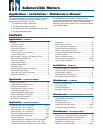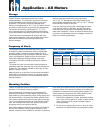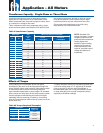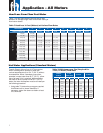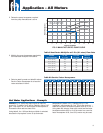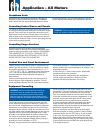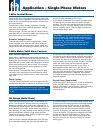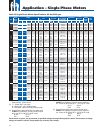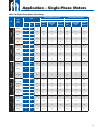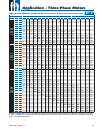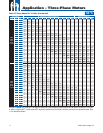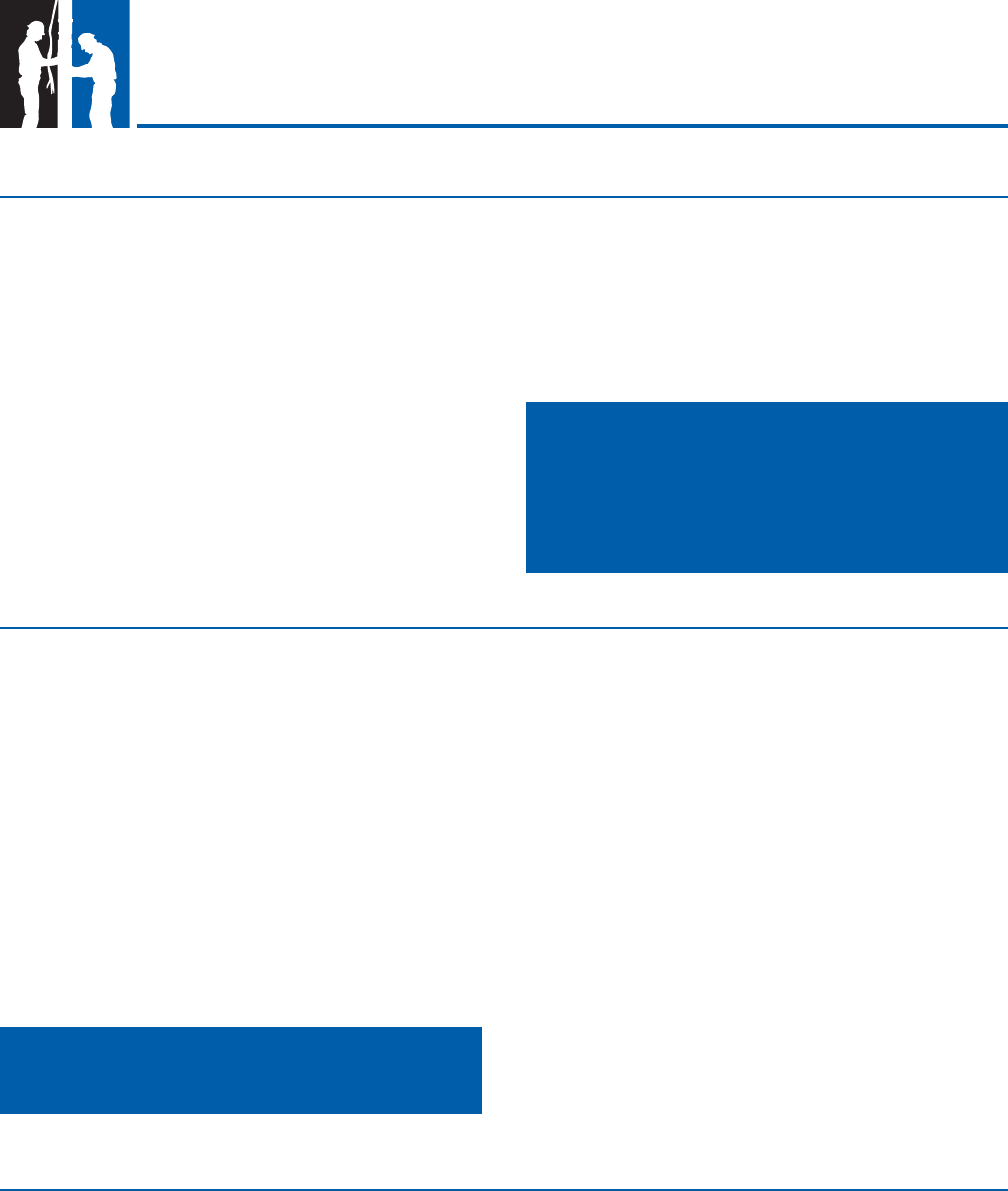
Application – Single-Phase Motors
BIAC Switch Operation
When power is applied the bi-metal switch contacts are
closed, so the triac is conducting and energizes the start
winding. As rpm increases, the voltage in the sensor coil
generates heat in the bi-metal strip, causing the bi-metal
strip to bend and open the switch circuit. This removes
the starting winding and the motor continues to run on
the main winding alone.
Approximately 5 seconds after power is removed from
the motor, the bi-metal strip cools suffi ciently to return
to its closed position and the motor is ready for the next
start cycle.
Rapid Cycling
The BIAC starting switch will reset within approximately 5
seconds after the motor is stopped. If an attempt is made
2-Wire Motor Solid State Controls
to restart the motor before the starting switch has reset,
the motor may not start; however, there will be current in
the main winding until the overload protector interrupts
the circuit. The time for the protector to reset is longer
than the reset of the starting switch. Therefore, the start
switch will have closed and the motor will operate.
A waterlogged tank will cause fast cycling. When a
waterlogged condition does occur, the user will be
alerted to the problem during the off time (overload reset
time) since the pressure will drop drastically. When the
waterlogged tank condition is detected, the condition
should be corrected to prevent nuisance tripping of the
overload protector.
Bound Pump (Sandlocked)
When the motor is not free to turn, as with a sandlocked
pump, the BIAC switch creates a “reverse impact
torque” in the motor in either direction. When the sand is
dislodged, the motor will start and operate in the
correct direction.
There are two elements in the relay: a reed switch and
a triac. The reed switch consists of two tiny rectangular
blade-type contacts, which bend under magnetic fl ux. It
is hermetically sealed in glass and is located within a coil,
which conducts line current. When power is supplied to
the control box, the main winding current passing through
the coil immediately closes the reed switch contacts.
This turns on the triac, which supplies voltage to the start
winding, thus starting the motor.
Once the motor is started, the operation of the QD relay
is an interaction between the triac, the reed switch and
the motor windings. The solid state switch senses motor
speed through the changing phase relationship between
start winding current and line current. As the motor
approaches running speed, the phase angle between
the start current and the line current becomes nearly
in phase. At this point, the reed switch contacts open,
turning off the triac. This removes voltage from the start
winding and the motor continues to run on the main
winding only. With the reed switch contacts open and
the triac turned off, the QD relay is ready for the next
starting cycle.
Single-phase three-wire submersible motors require the
use of control boxes. Operation of motors without control
boxes or with incorrect boxes can result in motor failure
and voids warranty.
Control boxes contain starting capacitors, a starting
relay, and, in some sizes, overload protectors, running
capacitors and contactors.
Ratings through 1 hp may use either a Franklin Electric
solid state QD or a potential (voltage) type starting relay,
while larger ratings use potential relays.
Potential (Voltage) Relays
Potential relays have normally closed contacts. When
power is applied, both start and main motor windings
are energized, and the motor starts. At this instant, the
voltage across the start winding is relatively low and not
3-Wire Control Boxes
enough to open the contacts of the relay.
As the motor accelerates, the increasing voltage across
the start winding (and the relay coil) opens the relay
contacts. This opens the starting circuit and the motor
continues to run on the main winding alone, or the main
plus run capacitor circuit. After the motor is started the
relay contacts remain open.
CAUTION: The control box and motor are two pieces
of one assembly. Be certain that the control box and
motor hp and voltage match. Since a motor is designed
to operate with a control box from the same
manufacturer, we can promise warranty coverage
only when a Franklin control box is used with a
Franklin motor.
CAUTION: Restarting the motor within 5 seconds
after power is removed may cause the motor overload
to trip.
QD Relays (Solid State)
10



